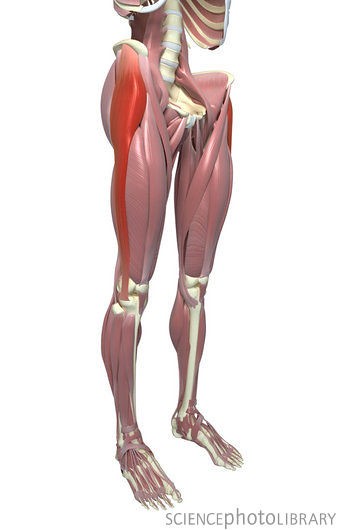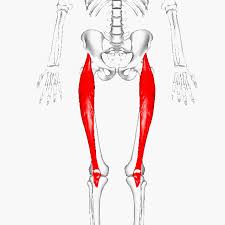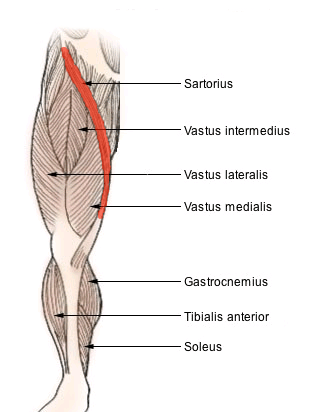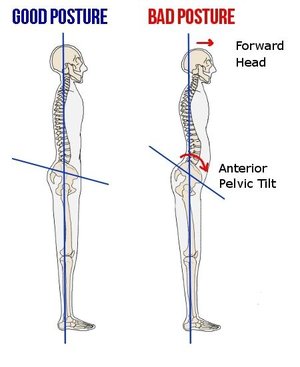What could be causing your hip tightness?
The hip joint also known as the femoral acetabular joint is known as a ball and socket joint because of how it is shaped. One of the most common reasons for hip tightness is prolonged sitting. With the development of the office job, sitting has become more of a common occurrence which has a negative impact on the tightness of our hips.
The tightness in the hips are often caused by a group of muscles called the hip flexor muscles which include the iliopsoas, rectus femorus, sartorius and tensor fascia lata. All of these four muscles cross that hip joint and therefore have an impact on the lifting of the leg in many different ways.
Hip tightness can be due to a combination of hip flexor tightness, lack of joint mobility and simply just muscle imbalancing. When we sit, our body is already starting to adapt to the seated environment and within 30 minutes of time some scarring can already start to occur in a process known as hysteresis. Now imagine sitting or maintaining a position of stress on an area for multiple hours at a time and for every work day. A lot of tightness and scarring can build up in these areas!
How do I know I have tight hips?
The most obvious of knowing that your hips are tight is that limited movement sensation when you are walking, running or simply just trying to get moving. Often times individuals will just find that there is a range of motion or movement that they used to be able to do but now they lack “flexibility” to get moving.
Other less obvious signs are that you are experiencing “anterior pelvic tilt” which simply means that your hips are rotating forwards due to the tightness of the muscles in the front of the hip that overpower the muscles that should be balancing the hips in the back and glut areas. This anterior pelvic tilt are occurs because of the following listed by Vladimir Janda’s Lower Cross Syndrome:
- Weak Gluteus muscles (Butt)
- Tight hip flexors
- Tight Low back Muscles
- Weak Core
As a result, tight hips can present itself frequently as the cause for low back pain, pinching in the hips, low back tightness, a weak core and an exaggerated lower back curve (hyperlordosis).
Tight Hips and Low back Pain
We are built basically like a string puppet that is pulled by the muscles. The muscles are influenced by the stress we put on them and they are always fighting gravity. So if you look at the tight hips being a tight string pulling your hip forward, the body has to try to react to this strong pull forward. Oftentimes, the body is forced to tighten the low back muscles just to try to fight against this forward pull.
Additionally, because the hips are rotating forward, the core will relax and lose its tone because now the hips are off balance and they no longer need to keep holding. Now that we use the core less, it gets weaker. This cascades to the gluts (butt muscles) relaxing because now they’ve lost any challenge from the core and so they can relax and be less active as well. Meanwhile all the force of holding your position has now been placed on the poor low back muscles who are now holding on for dear life to keep us functional. This over activity is causing a lot of tension on the low back and will then cause that exaggerated S shape that we may see the lower back becoming more and more arched as time goes on.
The tightness in the hips and low back may be the source of chronic low back spasms, may be the cause of tightness and may be a pre-cursor towards worse conditions like disk injuries.
Tight Hips and Knee Pain
Now that we know about low back tension due to tight hips, our bodies are not just affected above the hips but also below as well. Often times when our hips rotate forward it shortens the muscles on the front of the thigh known as the quadriceps and lengthens the muscles in the back of the leg known as the hamstrings. This imbalance created can lead to quite a few different challenges in the knees when left undetected.
The impact on the knee depends on where you place stress in the hips and which muscles are hyperactive.
- Tensor Fascia Lata muscle:An overactivity of this muscle will lead to tightness that pulls into the outside portion of the leg and can create what is known as ITB syndrome or IT band syndrome (iliotibial band syndrome) which affects many runners

- Rectus Femorus Muscle: This is one of the four quadriceps (muscles in the front of the thigh) and when this is overactive, it will cause tightness to occur in the thigh which can then pull into the front of the knee and impact the knee cap. This impact can lead to conditions such as jumper’s knee (infrapatellar tendonitis), runner’s knee (suprapatellar tendonitis) and just global knee pain (patello femoral pain syndrome)

- Sartorius: This muscle sounds like a gladiator but it is actually quite a small muscle but hyperactivity of this muscle can lead to knee pain in the inner portion of the knee. Coupled with the lack of activity in the gluts the muscles on the inside of the thigh known as the adductors cause increased pressure on the inside part of the leg and knee.

9 Exercises to fix your tight hips
Joint mobilizations:
90 / 90 Shin Box
- Sitting on the floor with both legs at 90 degrees, sitting up right.
- While leaving butt and heels on the floor rotate legs to the opposite side.
- Continue this rotation, add in a quad stretch by leaning into each of your legs.
- Progression – hip thrust onto your knees in a slow and controlled fluid motion.
Tactical Frog
- Start on hands and knees with your hands directly under your shoulders, then slowly move your knees to a wider stance.
- Either on your hands or forearms, rock forwards and back towards your heels, keeping your back flat.
- With lift off: When your weight is forward, keep your knees on the ground and lift one heel towards your butt
- With arms: When your weight is forward, lift one hand off the ground and reach it towards the ceiling, opening up your body towards that side.
- Hold for one second then return to frog position and repeat on the other side.
Weighted Goblet Squat
- Hold kettle bell close to your body.
- Bow forward & push your hips back until you feel a stretch in your hamstrings.
- Bend your knees to sit down, squeezing your glutes as you come back up.
- The kettle bell should be moving in a straight line up and down. Make sure that your knees don’t move past your toes.
Muscle work:
Piriformis ball
- Place a lacrosse ball in the area where your back pocket is and find a tender spot.
- In a seated position, make a number 4 with your legs.
- Sitting up tall, gently press down on your knee with one hand and with the other hold your foot.
- Lean forward to feel a stretch in your glutes.
- Hold for 20-30 seconds, remembering to breathe throughout the stretch.
Hip flexor Stretch
- Kneel down on one knee and place the other leg forward creating a 90 degree angle.
- Tuck your pelvis in to flatten your lower back and slowly shift your weight forward by lunging towards your opposite leg.
- To enhance the stretch, raise your arm overhead ( the same side as the kneeling knee) and bend your trunk towards the opposite side to increase the stretch.
- Maintain the position for 30 seconds and relax.
- Repeat a few times to get the most benefit from the stretch.
Hip Flexor and Quadricep Foam Roller
AGAINST WALL:
- Have the foam roller placed horizontally against the wall.
- Keep the foam roller in place by leaning into it with your body, placing it near you knee and starting with the outer muscle (on the side).
- Do small kicking motions (like you’re kicking your butt) a few times. Once you feel comfortable, you can move the foam roller up your leg.
- Repeat the kicking motion, and repeat moving the foam roller up until you reach the area just below your hips.
- Next, rotate your body so that the foam roller is placed in the centre, just above your knee.
- Repeat the kicking and moving the foam roller up the leg.
- Lastly, transfer the foam roller from the wall to the floor. Have it placed vertically- We are going to target the inside of the thigh.
let your leg drape over the foam roller so that your leg is out to the side and you’re resting the rest of your body on your opposite leg. - Start with the foam roller closer to the inside of the knee, and repeat the kicking motions. Move up as needed.
- Repeat this on both legs, until you feel some relief.
Stability
Hip Airplane
- Get into a lunge position with the affected leg forward and placed so its supported against the corner of a wall, with the opposite leg back.
- Have your hips parallel to the floor and your hands on the hips.
- Rotate your body at the hip joint, opening-up completely at the hips in a controlled manner (like opening a door). As you open your hips, drive the knee that is forward out against the wall.
- Slowly return to the initial position and continue the rotation in the opposite direction, closing-up at the hips.
- Maintain balance and stability on one leg with your knee driving out against the wall and stable at all times.
- Repeat approximately 10 times.
Hanging Squat
- Have one knee at a 45 degree angle on a bench and a band around your standing leg (just above the knee)
- Slowly rotate your standing leg outwards until you feel a stretch in your groin
- Bow forwards and sink your hips back into a squat
Monster Walks
- Place a band just below the knees and stand in an athletic stance (mini squat position) with tension on the band.
- Take a large step forward and out diagonally with one leg. Then repeat with the other leg, always maintaining tension on the band.
- Return going backward with toes down first. Then heel with each step.
As always, if you have any questions about your conditions and would like to schedule an appointment with us at Baseline Health and Wellness you can give us a call at 6046744027 or schedule online at www.baselinewellness.ca
Provided by Dr. Kody Au, Vancouver Chiropractor
*Disclaimer*
The information contained in the multimedia content now stated as “Content” posted represents the views and opinions of the original creators of such Content.
The Content has been created and shared for informational and educational purposes only. Baseline and it’s practitioners do not make any warranties or guarantees with respect to the accuracy, applicability, fitness, or completeness of the Content. Baseline does not warrant govern over the effectiveness or applicability of any sites linked or provident in the Content.
The Content is not intended to be a substitute for professional history, exam, diagnosis or treatment. Ensure that you always seek the advice of your physician or other qualified health provider with any questions you may have regarding a medical condition. Do not disregard professional medical advice or choose to delay in seeking medical care because of something you have read or seen on the Site.
Baseline hereby disclaims any and all liability to any party for any direct, indirect, implied, punitive, special, incidental or other consequential damages arising directly or indirectly from any use of the Content, which is provided as is, and without warranties.




